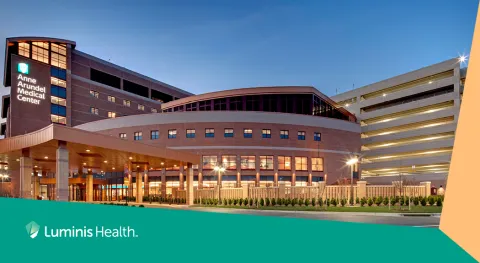by Luminis Health

Fibroids are benign tumors in the uterus that affects 20 percent to 80 percent of women by the time they reach age 50. Symptoms can include heavy menstrual bleeding, prolonged periods, and pelvic pain. In some cases, there are no symptoms. Some women experience unmanageable pain, as well as swelling of the abdomen or pelvic area. While doctors still don’t know what causes fibroids, we now have minimally invasive treatments, eliminating the need for large incisions that were common just a few decades ago. Here’s what you need to know:
During minimally invasive surgeries, smaller incisions and precise surgical tools are used, sometimes with robotic assistance like the da Vinci surgical system. Compared to traditional open surgery, there are numerous benefits, including:
- Less pain
- Less stress on your immune system
- Quicker healing
- Decreased need for pain medications, especially narcotic medication
- Lower risk of post-surgery complications
- Shorter recovery time
- Shorter hospital stays – many times, patients can go home the same day
- Shorter operating time with less time under anesthesia
- Smaller incisions with smaller, more subtle scars
What are the options?
Minimally invasive techniques can treat various gynecologic conditions, such as fibroids, endometriosis, ectopic pregnancy, heavy and painful menstrual periods, and ovarian cysts.
Based on your condition, health history, and other unique factors, your gynecologist may recommend one of the following types of minimally invasive surgery:
Advanced laparoscopic surgery and robotics
Laparoscopic surgery could be an alternative to a traditional hysterectomy (removal of uterus) or myomectomy (removal of uterine fibroids). small incisions are made in the surgical area to accommodate surgical tools and a camera for precision during the surgery. It can be used for complex cases, including large fibroids, advanced stage endometriosis, or certain gynecologic cancers. The Acessa® procedure, a laparoscopic radiofrequency ablation of uterine fibroids, is an advanced uterine-sparing treatment option. Heat is delivered directly to the fibroid tumor, causing it to shrink. It is an outpatient, same day procedure that allows you to return to work in four to five days and return to your normal activities quicker.
Robotic surgery, most commonly using the DaVinci® system, enhances precision and allows access to small or hard-to-reach areas.
With laparoscopic surgery (with or without robotics), patients typically return to light activity and driving within two weeks.
Hysteroscopic surgery
During a hysteroscopic procedure, your surgeon uses a camera (called a hysteroscope) to get a view of the lining of the uterus (endometrium). It requires no incisions, as this surgery is performed through the natural orifices of the vagina and cervix. This type of surgery is often used to treat abnormalities inside the lining of the uterus like fibroids. Hysteroscopic surgery can often be performed in an office setting without the need for sedation. The recovery time is about 24-48 hours.
Vaginal surgery
By inserting surgical tools through your vagina to the area where the surgery is being performed, surgeons can perform many procedures without making any incisions. And, depending on the exact minimally invasive procedure you undergo, it’s possible you could even return home the same day.
How do I know which is right for me?
Having open conversations with your doctor is essential in developing the best treatment plan for you. By sharing your health and wellness goals and getting answers to all your questions, you can make an informed decision and improve your quality of life.



